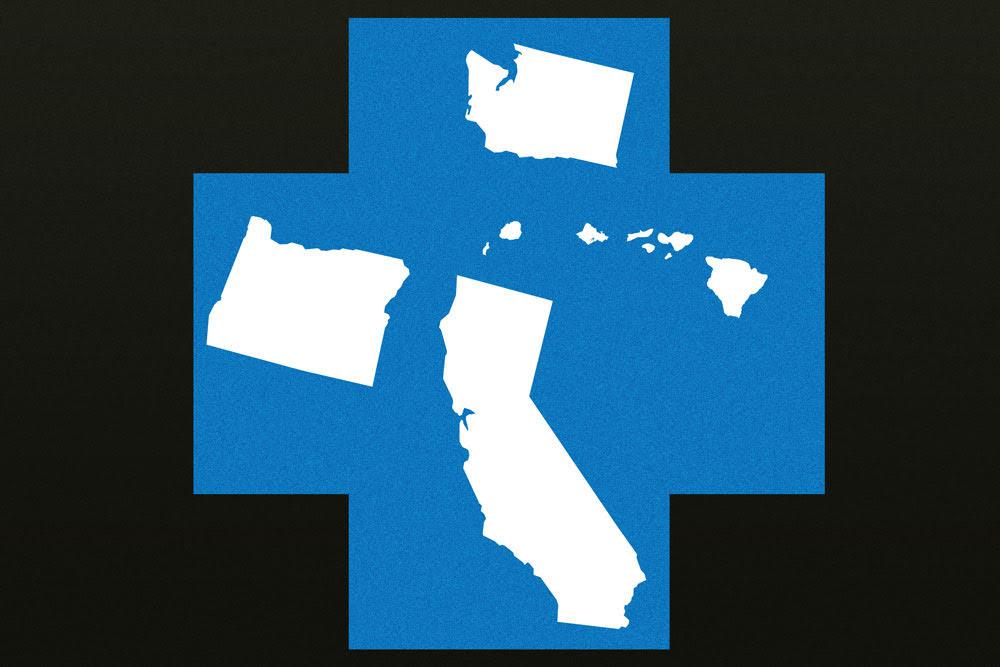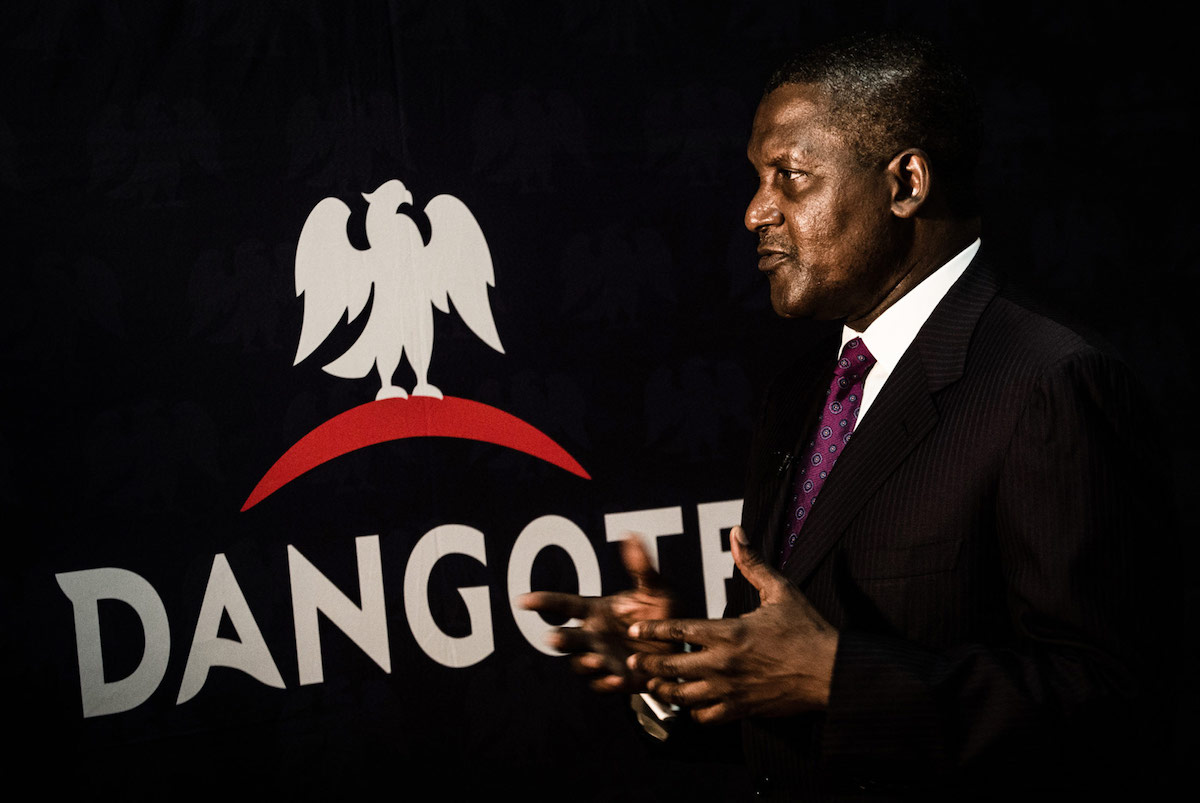By Suzanne Gordon
Copyright prospect

On September 3rd, in response to health-threatening policies implemented by President Donald Trump and his secretary of health and human services, Robert F. Kennedy Jr., the governors of California, Oregon, and Washington (soon to be joined by the governor of Hawaii) announced a “unique” partnership.
According to their initial press release, “President Trump’s mass firing of CDC doctors and scientists—and his blatant politicization of the agency—is a direct assault on the health and safety of the American people … California, Oregon, and Washington will not allow the people of our states to be put at risk.”
To mitigate this risk, California Gov. Gavin Newsom, Oregon Gov. Tina Kotek, Washington Gov. Bob Ferguson, and Hawaii Gov. Josh Green have formed the West Coast Health Alliance, which will give residents of the four states “accurate information and evidence-based public health recommendations about vaccines and public health.”
More from Suzanne Gordon
While this new alliance is an important and much-needed first step as the nation confronts federal policies that could jeopardize the health and well-being of millions of Americans, this kind of state action is not unique—at least not for California.
In the 1980s, when the world faced the emerging AIDS epidemic, the federal government, led by President Ronald Reagan, promoted public-health policies that seemed to be guided by ideology and prejudice rather than scientific evidence. In the face of government resistance and inaction, California launched novel and wide-ranging public-health programs designed not only to gather and distribute accurate information about AIDS, but also to find treatments and a cure. More than 40 years later, California’s initiatives of the 1980s to combat HIV/AIDS offer useful lessons—that some California leaders of today may have forgotten—about how states can counter dangerous federal policies and take the lead in protecting public health.
Today, AIDS has become a manageable, albeit not yet curable, chronic illness. When it first emerged in 1981, however, it was as formidable, frightening, and mysterious as the sudden appearance of COVID-19 in 2020. Perhaps even more frightening, since AIDS had a much higher fatality rate. Before effective treatment was discovered in 1996, full-blown AIDS was a death sentence. Unlike many other epidemics, the HIV epidemic initially seemed to impact only a small section of the population—gay men, IV drug users, and prostitutes who practiced unsafe sex—although it quickly became clear that it threatened anyone who received a blood transfusion. (Since someone in the U.S. receives a blood transfusion about every two seconds, this involved millions of Americans.) As well, anyone who came into contact with blood products or bodily fluids was also at risk. Hundreds of thousands of health care workers were terrified that a needlestick or other mishap would kill them.
As HIV physician Marcus Conant, one of the San Francisco physicians who treated some of the earliest AIDS patients, told the Prospect, “There were three things we could do in the early stages of the epidemic. We could pray for patients, quarantine them, or try to educate them. We knew that for something as big as this, none of these three things was going to work. We’d learned from smallpox, polio, and nearly every other infectious disease that the only thing that was going to work to stop a fatal epidemic was a vaccine.”
In the 1980s, the federal government promoted public-health policies that seemed to be guided by ideology and prejudice rather than scientific evidence.
Instead of immediately devoting time, money, and personnel to conducting basic and targeted AIDS research, Conant said, the federal government’s approach to combatting HIV/AIDS was timid, even after 1983, when initial funding for AIDS research was approved.
Why? Because, in an eerie parallel to what is happening in Washington today, federal government action was determined by anti-government ideology combined with crackpot theories about what caused, and thus what it would take to stem, the AIDS epidemic.
Although many people think that President Donald J. Trump represents the greatest threat to liberal democracy in the nation’s history, it is worth remembering that that is how many viewed Ronald Reagan when he was elected president in 1980. In his first inaugural, Reagan bluntly stated, “Government is not the solution to our problem; government is the problem.” In a 1986 press conference, he made his position even clearer: “The nine most terrifying words in the English language are ‘I’m from the government and I’m here to help.’”
Reagan wasn’t just anti-government, he was also anti-gay, confessing to his authorized biographer Edmund Morris, who included the statement in his biography Dutch: A Memoir of Ronald Reagan, that “maybe the Lord brought down this plague [i.e., AIDS]” because “illicit sex is against the Ten Commandments.”
Because most members of Congress and many members of the public shared some variant of this view, Conant continued, it is hardly surprising that when two congressmen proposed legislation to fund AIDS research in 1982, it died in committee.
As one of the nation’s main hot spots of the AIDS epidemic, California faced the same prejudices. “Since the people who were getting AIDS were primarily homosexuals, IV drug addicts, and prostitutes,” physician Kenneth W. Kizer, formerly California’s top health official and head of the Department of Health Services, told the Prospect, “many Californians believed that they [AIDS patients] deserved what they got. They asked, ‘Why should we worry about it?’”
These sentiments were reflected, to some degree, in the beliefs of California’s conservative Republican governor, George Deukmejian, who, Kizer noted, had often asked him, in light of the growing epidemic and its dire outcomes, why gay men didn’t just stop having sex with other men, or IV drug users didn’t just say no to drugs (as Nancy Reagan recommended), and prostitutes didn’t get out of sex work and find other jobs.
California even had its own mini version of Robert F. Kennedy Jr., in the form of conspiracy theorist Lyndon LaRouche Jr. LaRouche gathered a bevy of his own “experts” who claimed, against all scientific evidence, that you could get AIDS by going to a restaurant or sending your child to school. In fact, LaRouche twice introduced a statewide initiative that would have forced California health officials to spend billions to set up the equivalent of prison camps to isolate hundreds of thousands of people, not only those who tested positive for AIDS but those who had come in contact with the virus. That would have meant, Kizer said, expressing the exasperation he felt at the time, testing about 27 million Californians—the state’s entire population. Both initiatives made it onto the ballot, but both, fortunately, were voted down.
What California had in its favor was a very activist gay community, including some influential Republicans, and public-health professionals who were committed to putting in place evidence-based health policies and conducting research about how to prevent and treat the infection.
In 1983, Conant, who was one of those public-health activists, met with the Speaker of the California State Assembly and San Francisco power broker Willie Brown. With Brown’s support, Assemblyman John Vasconcellos, who was chair of the Assembly Ways and Means Committee and the second-most powerful player in the state legislature, introduced legislation to earmark money for the University of California system to do research on HIV/AIDS. The initial funding was $3 million, and in each subsequent year, the legislature would renew and increase that sum. The funding eventually exceeded $100 million.
These initial funds, Conant said, were invaluable in ways many could not have initially appreciated. He cites one example: “We had a well-respected virologist working with us who was trying to research a virus that was 94 precent fatal [AIDS], and he didn’t even have a lab with a protective hood in it that could shield him from infection. He didn’t have the money to buy the hood—and now, he did.”
By 1986, a year after Gov. Deukmejian asked Kizer to lead the state’s health department (then called the California Department of Health Services, or CDHS), the state passed additional legislation that established a $4 million AIDS Vaccine Research and Development Grant Program and provided $6 million for clinical trials for candidate vaccines.
All of this, Kizer told the Prospect, was unprecedented. “Historically, most medical research was funded by the federal government through grants from the National Institutes of Health or other federal agencies. California’s funding of both basic and applied AIDS research was truly groundbreaking.” The CDHS, for example, provided funding for a special AIDS research institute at San Francisco General Hospital.
Health officials understood that the state would need to attract industry partners to help develop a vaccine. To do that, explained Michael Hughes, then chief of the Epidemiology and Research Branch of the Office of AIDS, CDHS set up a vaccine research and development committee to review competitive grant applications. One of the prominent members of this committee was Jonas Salk, the physician who gained global fame for developing the first effective polio vaccine and whose Salk Institute for Biological Studies was located in Southern California.
Salk, Kizer said, approached state health leaders for HIV vaccine research support after being unceremoniously rebuffed by the FDA in Washington, D.C. “As he told me when we met the first time,” Kizer recalled, “Salk went to Washington to discuss his work aimed at developing a vaccine to prevent AIDS. He said he was kept waiting for a day at the FDA without being seen.” When he was finally granted an audience the next day, the then most famous vaccine developer in world was told, in essence, thanks but no thanks; please don’t call us, and we certainly won’t call you.”
Salk received a much more welcoming reception from California’s health officials.
California didn’t just provide funding for the development of an AIDS vaccine. State officials also took two other crucial steps to make sure their investment would have an actual return. They limited liability for noneconomic losses due to unavoidable injury from a licensed AIDS vaccine and established an AIDS Vaccine Victims Compensation Fund. This step, Conant explains, was critical. “Not only might some people react poorly to the vaccine, but if someone tested positive because he’d taken the vaccine, he could sue the state or vaccine developer claiming he got AIDS from the government.”
The state further incentivized industry participation when it guaranteed the sale of 500,000 doses of any vaccine that was state-licensed and promised to buy whatever remained unsold. “In viewing these measures, you have to remember the truly extraordinary public-health threat HIV posed at that time,” Kizer commented.
On a political level, the California effort embarrassed the federal government into taking action on the research and vaccine development front.
Another major hurdle the state anticipated and then addressed was the concern that the same federal government agencies that initially took no action to develop a vaccine would not give their approval to one that the state developed. The state dealt with this problem by using statutory authority granted to California by its state legislature in 1937. This state legislative authority allowed California to approve drugs that had not been approved by the federal Food and Drug Administration, provided that those drugs were sold only in California. The state then set up an approval process for new drug applications, which, decades later, enabled it to approve, for sale just in California, new drugs for the treatment of AIDS, as well as a vaccine if one were successfully developed.
“Some of this was very contentious,” Hughes recalled, “and a lot of people were not happy with us.” One of those people was the director of the FDA, Frank Young. “Young,” Conant added, “flew out to California to try to stop legislation that was going to allow us to do this on our own.” Young was not successful.
The multiyear effort California launched did not, in fact, produce an AIDS vaccine. Indeed, no effort to date has. Over the past 40-plus years, HIV’s ability to rapidly mutate and destroy the immune system, among other things, has defied over 150 human-subject vaccine trials worldwide. A successful vaccine against HIV infection remains a scientific enigma.
The California effort did, however, succeed on multiple other levels. For example, it produced a cohort of physicians and other researchers who went on to develop the antiretroviral medications that have turned HIV/AIDS from a uniformly fatal disease to a manageable chronic illness. On a political level, Conant said, the California effort embarrassed the federal government into taking action on the research and vaccine development front.
Finally, and perhaps most importantly, California’s effort succeeded on a symbolic and psychological level. “What we did was give people hope,” Conant said. “We had people who were sitting there thinking, ‘I am going to die, and no one cares; no one is doing anything.’ As doctors know, the one thing we can always do is give patients hope. And we did just that.”
Today, Conant continued, the issue isn’t simply hope in the face of a federal assault on science in general and vaccines in particular: It’s trust. Today, trust in government and science is being eroded. It can, and must, be restored.
“We helped to develop the scientific and technological infrastructure that was necessary for breakthrough discoveries that were in fact later made,” Kizer elaborated. “That infrastructure included researchers, laboratories, data, and new technologies that supported the researchers. Most importantly, we created a mindset that was as critical then as it is now.”
“The most important obstacle to overcome then and now,” Kizer continued, “is paralyzing negativity. What you want and need is positive energy that says, ‘We can do this.’ Hope is essential, but bold action makes hope real.”
That is what makes the Pacific states’ new initiative so important. “States can do more than develop and share accurate information,” Kizer argued. “They can convene experts and put together task forces and action teams that set bold aims and identify priorities and chart the pathways to achieve those goals; they can find partners in industry and philanthropy to help fund the research and technology that is being stymied at the federal level. It may sound like a cliché, but we did it before in the face of adversity, and we can do it again.”



